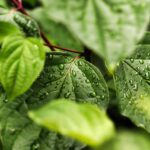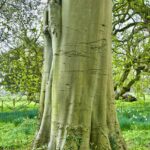Why you simply must checkout Effective water conservation techniques in Oregon: Southeastern Oregon is also impacted by the water cycle shortages.
Historical Water Usage and Trends – Everything you need to know!
The Great Basin: A Land of Beauty, Facing a Water Challenge
The Great Basin, with its majestic mountains and expansive deserts, holds a special place in the American landscape. But beneath this beauty lies a critical challenge: a growing water shortage.
Let’s work together to secure a sustainable future for this unique region.
Saving Water, Securing Our Future:
- Conserving at Home: Every drop counts! Take shorter showers, fix leaky faucets, and choose water-saving appliances. Simple changes make a big difference.
- Understanding the Cycle: Rain and snow are the lifeblood of the Great Basin. Let’s learn how water moves through this delicate ecosystem to make smart decisions.
- Working Together: We can all play a role in finding solutions to this challenge. From innovative technologies to community-based initiatives, let’s explore ways to preserve our precious water resources.
Facing the Drought:
- The Challenge: The Great Basin is facing increasingly severe droughts, impacting our communities and ecosystems.
- Finding Solutions: From exploring new water sources to implementing water-wise practices, let’s work together to find sustainable solutions.
Join us! Let’s work together to ensure a future where the Great Basin thrives, both in beauty and in water security.
The Great Basin’s Water Woes: A Story of Droughts and Solutions
TL;DR: The Great Basin is a dry region with limited water. Climate change is making things worse, causing more droughts and less water. To save water, we need to use less of it, use it more wisely, and find new ways to get it.
The Great Basin’s Water Cycle: A Delicate Dance
The Great Basin, a vast region in the western United States, is known for its dry climate and its iconic mountains. But beneath the surface lies a water story. The Great Basin’s water cycle is a delicate balance between rain, snow, evaporation, and groundwater.
How Water Moves in the Great Basin
- Rain and Snow: Most of the water in the Great Basin comes from rain and snow. But, the area doesn’t get a lot of either. The snow melts in the spring, feeding rivers and streams.
- Evaporation: With hot summers, a lot of water evaporates back into the atmosphere, leaving less water in the ground.
- Groundwater: Some of the water soaks into the ground, becoming groundwater, a hidden reservoir that’s important for plants and animals.
The Growing Threat of Water Shortages
Over the last few decades, the Great Basin has seen more droughts and less water. Climate change is making things worse. Here’s why:
- Higher Temperatures: Warmer temperatures cause more water to evaporate, leaving less for plants and animals.
- Changing Precipitation Patterns: Rainfall is becoming less predictable, meaning some areas get too much, and others get too little.
- Melting Glaciers: The Great Basin’s glaciers are melting faster than ever, impacting the water supply.
These changes are leading to a water shortage, which is impacting people, plants, and animals. Here are some of the consequences:
- Less Water for Crops and Livestock: Farmers struggle to grow crops and ranchers face challenges feeding their livestock.
- Decreasing Wildlife Populations: Animals need water to survive, and droughts threaten their habitats.
- Increased Wildfires: Dry conditions lead to increased risks of wildfires, damaging landscapes and impacting air quality.
Finding Solutions to the Water Crisis
Addressing the water shortage in the Great Basin requires a combination of efforts:
Water Conservation: Using Less, Saving More
- Saving Water at Home: Take shorter showers, fix leaky faucets, and use water-saving appliances.
- Water-Wise Landscaping: Use drought-tolerant plants and water lawns efficiently.
- Reducing Water Use in Agriculture: Farmers can use drip irrigation systems, which use less water than traditional methods.
Innovative Irrigation Techniques: Using Water Smarter
- Drip Irrigation: This method delivers water directly to the roots of plants, reducing water loss through evaporation.
- Sprinkler Systems: More efficient sprinklers use less water and reduce runoff.
Policy Measures: Working Together for Change
- Water Management Plans: Local, state, and federal governments can develop plans to manage water resources more effectively.
- Financial Incentives: Governments can offer incentives for water conservation efforts.
- Water Rights: Reviewing and updating water rights to ensure fair access to water resources.
The Active Climate Rescue Initiative: A Beacon of Hope
The Active Climate Rescue Initiative is an organization committed to finding solutions to the Great Basin’s water crisis. They are working with communities, businesses, and governments to promote water conservation, develop innovative irrigation techniques, and advocate for policy changes.
Summary: A Future of Water Stewardship
The Great Basin’s water future is uncertain. But, by embracing water conservation, innovative technology, and proactive policies, we can create a more sustainable and resilient future for this important region.
The Active Climate Rescue Initiative is an important resource for learning more about the challenges and solutions facing the Great Basin. Join them in advocating for change, and together we can ensure a brighter future for the Great Basin and its precious water resources.
More on Effective water conservation techniques…
- ## Effective Water Conservation Techniques
- water conservation tips
- water saving techniques
- water efficiency measures
- water conservation strategies
- how to conserve water
- save water at home
- water saving devices
- low-flow showerheads
- water-efficient appliances
- water-wise gardening
- xeriscaping
- greywater systems
- rainwater harvesting
- water conservation landscaping
- drought-tolerant plants
- water conservation in agriculture
- water conservation in industry
- water footprint calculator
- water conservation policies
- water conservation programs
- water conservation education
- sustainable water management
- water conservation technology
- water conservation innovation
- water conservation research
- ## Historical Water Usage and Trends
- historical water usage
- water consumption trends
- water scarcity history
- water management history
- water resource management
- historical drought events
- water policy history
- water infrastructure evolution
- water demand forecasting
- water conservation history
- global water usage patterns
- water consumption by sector
- water usage by country
- water usage by population
- historical water pollution
- water quality trends
- water security issues
- water crisis history
- water scarcity solutions
- water conservation impact
- climate change and water resources
- water resources management strategies
- sustainable water use




